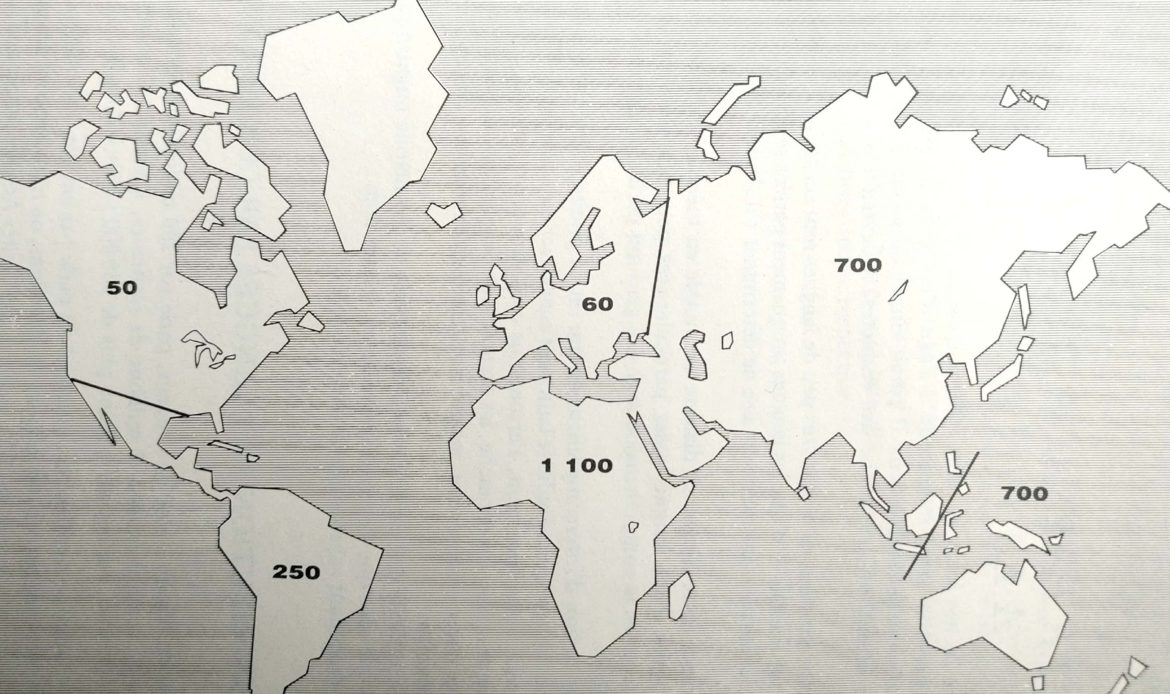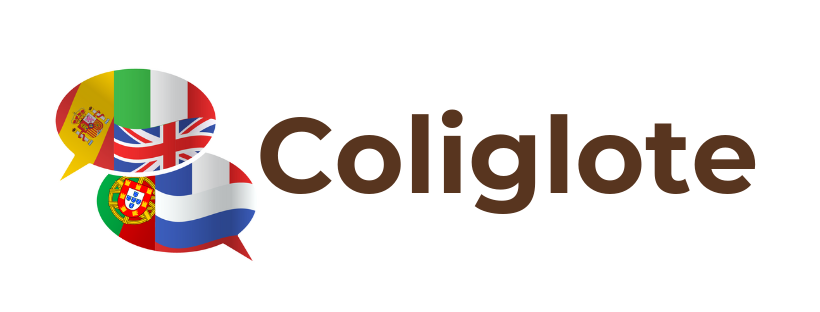Of the 3000 languages on Earth, very few are written: barely hundred! All the others are only spoken languages.
Nevertheless, linguists have managed to draw a linguistic landscape representing the number of languages spoken per continent.
This is what it looks like:

North America
In addition to English and French, there are still more than 50 Indian languages.
Latin America and the Caribbean
Spanish and Portuguese are in the majority, but there are also some English and French speakers. And some 250 Indian languages, including Quechua, the most important, which is the language of the Incas.
Europe
Only about thirty national languages as well as dialects such as Basque or Breton which do not have an official status.
Asia
As in Europe, there are about thirty official languages. But there are many non-official languages: more than 600!
Oceania
The spoken languages are not well known. These are Melanesian and Aboriginal languages. We can consider that there are about 700 of them.
Africa
The Bantu languages south of a Cameroon-Kenya line are estimated to be about 600. The black African languages of the west of the continent are estimated at nearly 500, and the languages of the Chamito-Semitic group must also be added, which makes between 1000 and 1200 languages spoken in Africa.
This was therefore a glimpse of today’s linguistic landscape knowing that it is the result of a very long evolution and that many changes will still be coming, inexorably. How is this linguistic landscape likely to evolve?
The least developed countries are generally those with the greatest linguistic fragmentation. Their languages are the most fragile and most likely to disappear except for languages with a strong culture such as Breton, Corsican, Icelandic or Catalan.
On the other hand, the most developed countries are those that have achieved a greater linguistic unity. The languages spoken by more than a million people are the most likely to survive in the future, but their number is just over a hundred… As a result, the number of languages of the future will most likely be lower than today.
If you liked this article, don’t hesitate to share it, and have a look at my other similar articles:
- Language families
- A world of languages
- Myths about the origins of languages
- To which language group does your language belong?
- Non-verbal communication
- Are some languages easier to learn than others?
- Does cross-comprehension between languages work?
- Discovering Whistling Languages
Article written by Ingrid, Coliglote
Image “Nombre de langues dans le monde”, p14, Michel Malherbe, Les langages de l’humanité, Une encyclopédie des 3000 langues parlées dans le monde, Editions Robert Laffont, 2010


Ronald
19 July 2019 at 12 h 05 minVery interesting !
DZjS6PYOwNH
15 February 2020 at 21 h 49 min418820 590857This is such a great post, and was thinking much the same myself. Another great update. 303709
cach vo m88
6 April 2020 at 16 h 45 min196560 41954Greetings! This is my first comment here so I just wanted to give a quick shout out and tell you I genuinely enjoy reading via your weblog posts. Can you recommend any other blogs/websites/forums that deal with the same topics? Thank you so considerably! 631527
Coliglote
6 April 2020 at 19 h 47 minHi! Thank you for your complimentary comment! I can’t recommend any other blog or particular site to you because I write my articles myself, taking information from my own books or from the Internet. For each article I write, I name my sources at the bottom, so you can go to them that way, and you’ll probably find more different information this way.
Regards
Ingrid
lik m88
9 April 2020 at 0 h 46 min857370 722378Hey there! Wonderful stuff, please do tell us when you post once again something related! 69188
Coliglote
9 April 2020 at 11 h 04 minHello! I think I’m going to rewrite an article about languages similar to this one very soon. This article has been on my blog for months and I had almost no reaction until last week, so I thought that this topic was not of interest to many people, but now that I suddenly see dozens of positive reactions, I’m motivated to write more! Subscribe to the Newsletter to be notified when the next articles come out …
Coliglote
9 April 2020 at 11 h 23 minIf you liked this article, don’t hesitate to share it, and have a look at my other similar articles:
• Language families http://www.blog.coliglote.com/en/2019/05/18/les-familles-de-langues/
• A world of languages http://www.blog.coliglote.com/en/2019/05/18/un-monde-de-langues/
• Myths about the origins of languages http://www.blog.coliglote.com/en/2019/08/21/mythes-sur-les-origines-des-langues/
• To which language group does your language belong? http://www.blog.coliglote.com/en/2019/09/18/a-quel-groupe-de-langues-ta-langue-appartient-elle/
• Non-verbal communication http://www.blog.coliglote.com/en/2019/11/07/la-communication-non-verbale/
• Are some languages easier to learn than others? http://www.blog.coliglote.com/en/2020/02/04/y-a-t-il-des-langues-plus-faciles-a-apprendre-que-dautres/
• Does cross-comprehension between languages work? http://www.blog.coliglote.com/2020/02/25/lintercomprehension-entre-les-langues-ca-fonctionne/
• Discovering Whistling Languages : http://www.blog.coliglote.com/en/2020/03/25/a-la-decouverte-des-langues-sifflees/
nicolas vrba
14 April 2020 at 19 h 07 min628175 564925 Nice post. I learn something more challenging on different blogs everyday. It will always be stimulating to read content material from other writers and practice a bit something from their store. Id prefer to use some with the content material on my blog whether you dont mind. Natually Ill give you a link on your internet weblog. Thanks for sharing. 143753